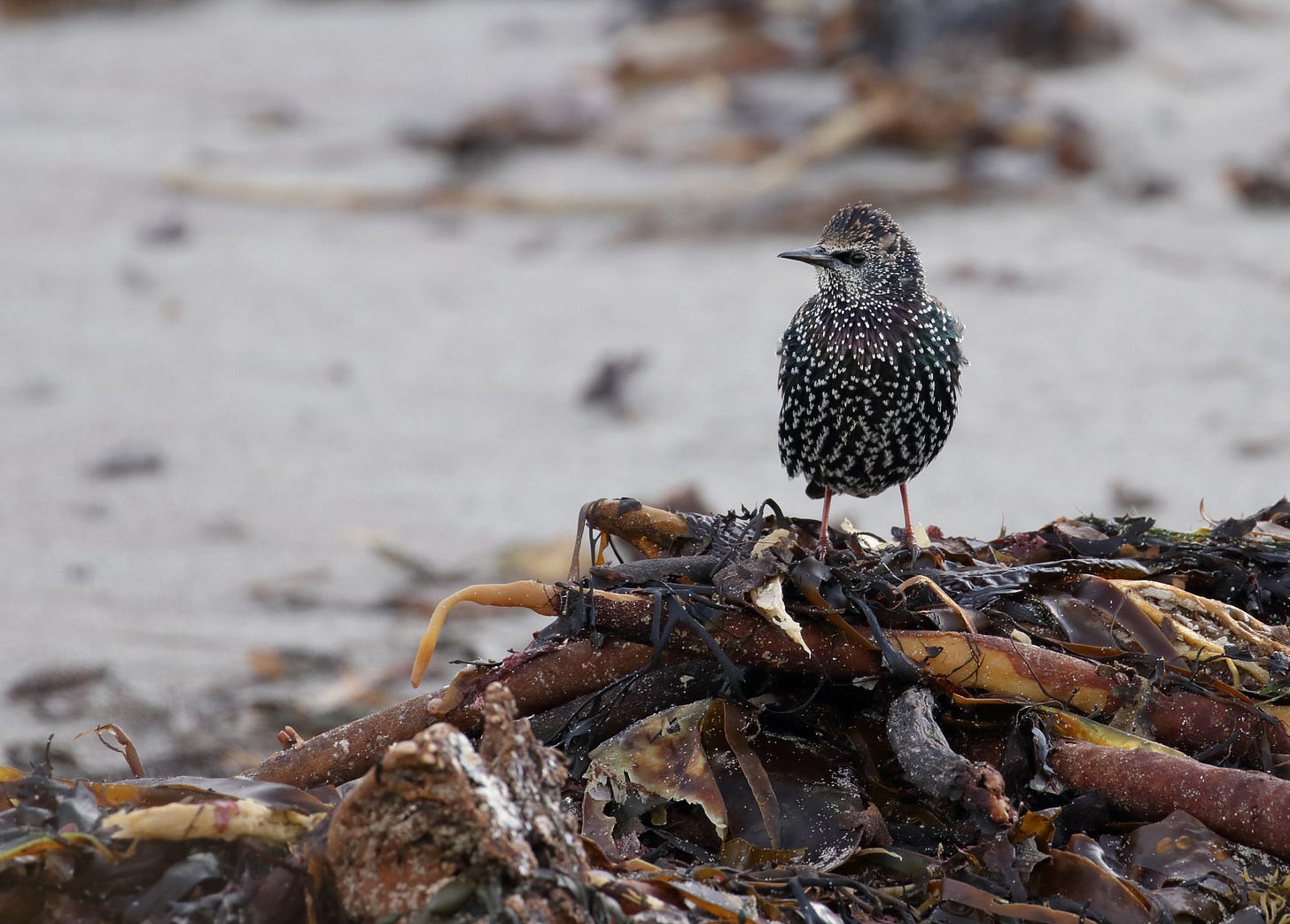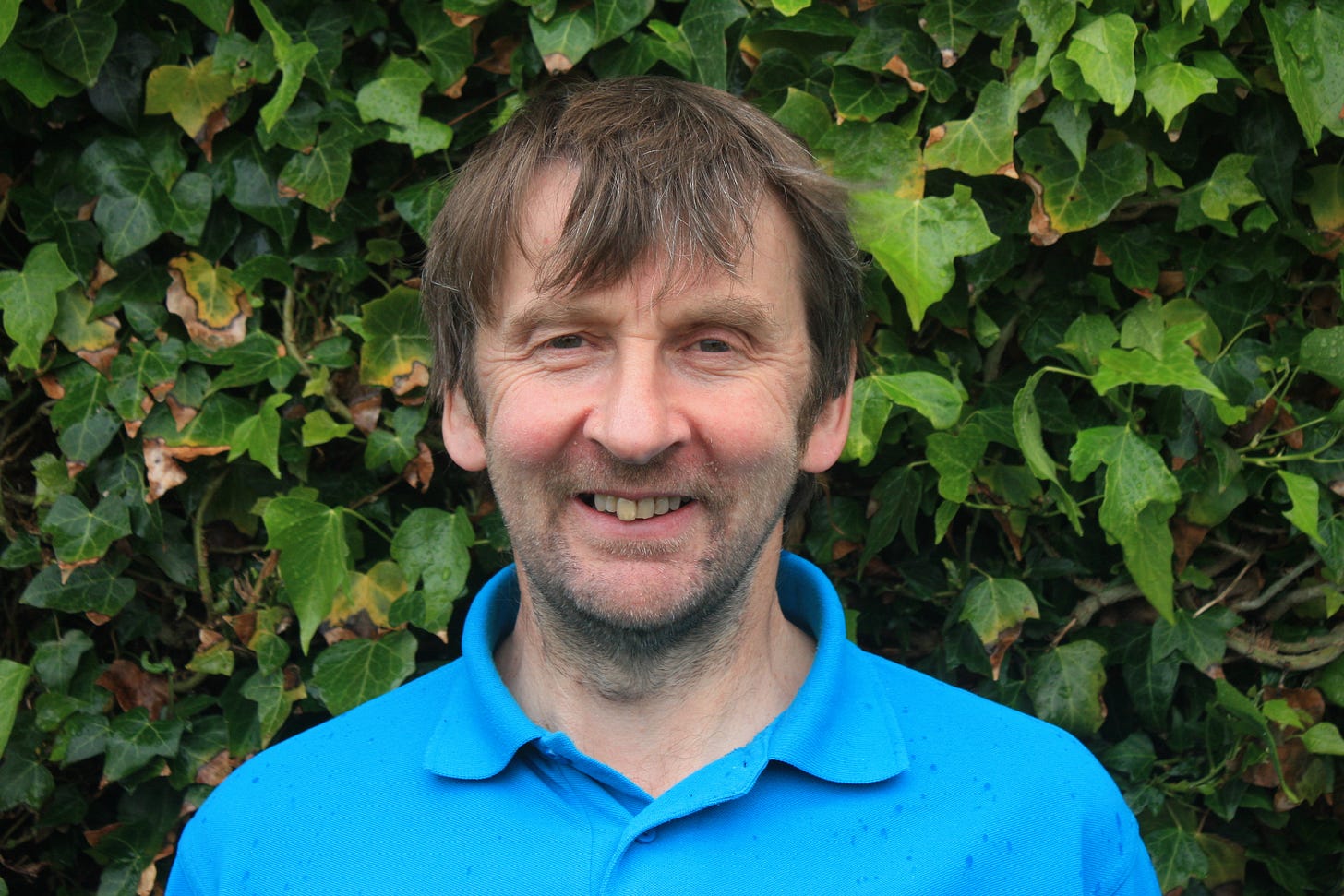Everyone should know what a starling (Sturnus vulgaris) looks like - with their glossy, iridescent black feathers and an astonishing repertoire of calls and songs. They have long been familiar visitors to gardens across the UK, including here in the Highlands of Scotland. But did you know that they are disappearing at an alarming rate?
Between 1994 and 2022, Scotland’s starling population plummeted by 48% (Nature.Scot, 2024). So severe is their decline that they are now on the UK’s Red List of birds of high conservation concern.
Initially, it was thought that their decline was mainly in rural areas, particularly on farmland. However, the pattern of loss is now evident in urban settings too, despite the fact that towns and cities support around 60% of the UK’s starling population.
Starlings are gregarious birds and are probably most famed for their stunning murmuration displays. When you see so many thousands of birds dancing through the winter sky on the TV (or in real life if you are lucky) it’s easy to be fooled into thinking the species is doing rather well.
Sadly, this is not true.

I guess Starlings have never been particularly popular. They are often regarded as "bird-table bullies": arriving in noisy, swaggering gangs and booting off the blue tits and robins, as they commandeer feeders for themselves.
Some people also dismiss them as ugly – which, if you have ever really looked at a starling, you would never dream of doing. Close-up they are one of our most attractive birds, especially at this time of year, during the breeding season. Their feathers, appearing black from a distance reveal a glossy plumage as it gleams in the winter sunshine, turning from black to green, then purple as it catches the light, refracting colours like petrol on water.

Then there is their extraordinary sound. Starlings have a bizarre repertoire of calls and songs, with a high degree of mimicry – any individual starling is able to imitate the sounds of up to 20 other bird species. They can even mimic man-made sounds such as mobile phones, referees’ whistles, and even car alarms.
In the Highlands, we have both resident starlings and migratory ones. During September and October vast hordes of starlings arrive from Scandinavia and northern Russia to join our local starlings in spending the winter here. They will return home during February and March.
Scientists are trying to discover just what is driving starling declines in the UK and find solutions to improve the prospects for one of our best-known birds.
Some suggest the problem has happening during the winter. But is it due to habitat loss? A reduction in their insect-rich food sources? Changes in agricultural practices? Pesticides? Predation? Or something more complex? The thing is, despite it happening all over the country, no one knows exactly what is causing the decline. What we do know is that without urgent action, this once-common bird will continue to vanish from our landscapes.
When common birds begin to disappear - just as we have seen with house sparrows in recent decades- it is a sign that something is seriously wrong with how we care for our natural world.
Starlings are remarkable. And yet, they are fading from our world. Losing them should concern us all.
The good news? We can still help.
In our next blog, we’ll share what the Ranger Service is doing to support starlings in highlands - and how you can also take action to make a real difference.
Andy Summers, North Highland's Senior Ranger for High Life Highland, is a dedicated naturalist with a deep understanding of the region's diverse ecosystems. His extensive experience in wildlife conservation and passion for preserving North Highland's pristine landscapes make him a vital asset. Andy's work encompasses wildlife observation, environmental education, and passing on a greater appreciation for the area's unique flora and fauna. His commitment to conserving North Highland's natural heritage is evident in his expertise and unwavering dedication.








I love starlings. A couple of years ago, a whole small woodland in Edinburgh was destroyed to make way for a cyclepath, making the starlings that nested there homeless. So that winter the starlings moved to some trees near where I live and for a whole winter we could watch their amazing murmurations from our living room. But it was only for one year and I've no idea where they roost now. The reduction in their populations across the country is tragic.
A fascinating read, thank you Andy! Definitely one of my favourite species, we have a smattering up here in Milton of Leys that dart about even in the strong February winds. Looking forwards to part 2 :)